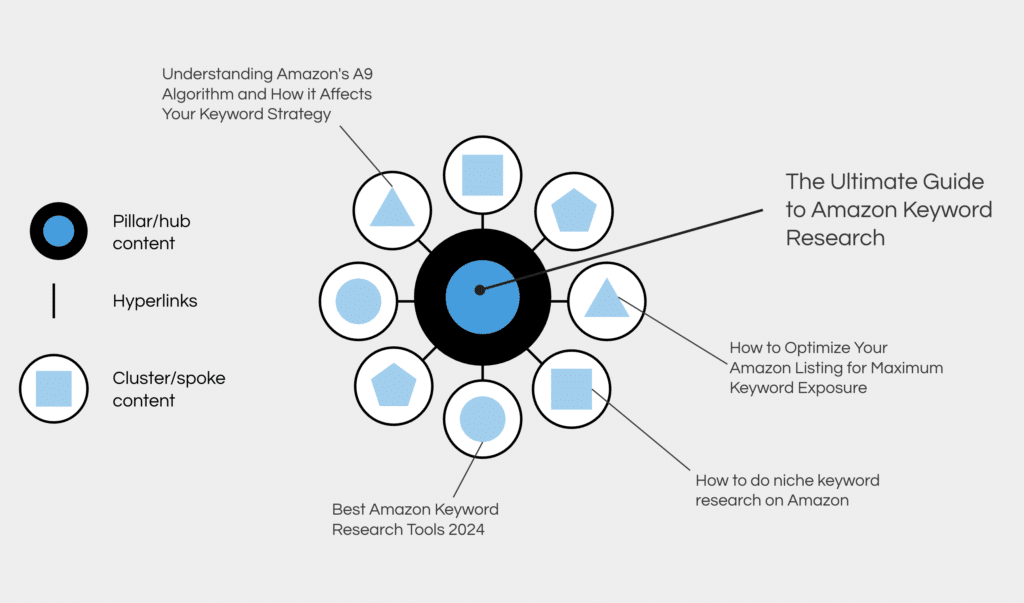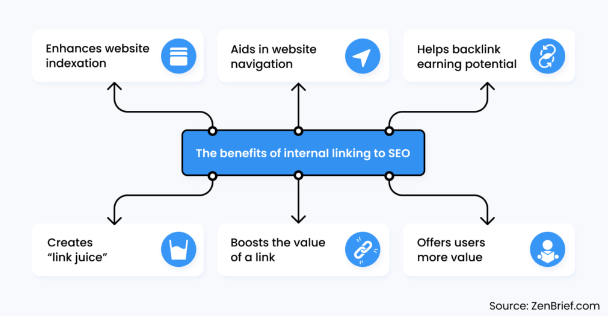Unlock the secret to skyrocketing your website’s search rankings with keyword clustering – the ultimate SEO strategy for success!

Image courtesy of via DALL-E 3
Table of Contents
Introduction to Keyword Clustering
Keyword clustering is a crucial aspect of any successful SEO strategy. Understanding what keyword clustering is and why it matters can significantly boost your website’s visibility on search engines. Let’s delve into the world of keyword clustering and discover how it can enhance your online presence.
What is Keyword Clustering?
Keyword clustering is like grouping similar words together to help search engines understand what your content is about. By organizing related keywords into clusters, you make it easier for search engines to recognize the relevance of your website for specific topics. This can lead to higher rankings in search results, making it more likely for people to find your site.
Why Keyword Clustering Matters
Keyword clustering is essential because it helps search engines identify the main themes of your content. By grouping related keywords, you provide clear signals about the topics you cover, making it easier for search engines to match your website with relevant search queries. This can lead to improved search rankings, increased organic traffic, and better organization of your content.
How Search Engines Work
In order to understand how search engines rank websites, it’s important to know a little bit about how they work. Search engines like Google or Bing use complex algorithms to crawl and index web pages to provide users with the most relevant results. Keywords play a crucial role in this process, helping search engines determine the content of a website and how it relates to a user’s search query.
Crawling and Indexing
Search engines use bots, also known as spiders or crawlers, to systematically browse the vast expanse of the internet, discovering web pages and adding them to their index. Imagine these bots as diligent collectors, meticulously scanning each page they encounter and storing information about it for future reference.
Ranking Factors
Once a page is indexed, search engines use a variety of ranking factors to determine where it should appear in search results. Relevance is key; search engines analyze how closely a page’s content matches a user’s search query. Keywords are crucial here – the words and phrases on a page that match a user’s search terms are signal to a search engine that the page may be relevant to the query.
Finding Keywords for Clustering
Keyword research tools are like treasure maps that help you find the best words to use for your website. These tools show you popular words that people search for when looking for something online. For example, if you’re writing about puppies, a keyword research tool can help you discover words like “cute puppies,” “dog training,” or “adorable pets.” By using these tools, you can pick the perfect words to group together in your content.

Image courtesy of www.geeksforgeeks.org via Google Images
Identifying Related Keywords
When you’re searching for keywords, it’s not just about finding any words. You want to find words that are friends with each other and make sense together. For instance, if you’re talking about space, keywords like “astronaut,” “galaxy,” and “universe” are all related and can be clustered together. By choosing words that have similar meanings or are about the same topic, you can create powerful keyword clusters that help your website shine.
Grouping Keywords Together
When it comes to grouping keywords together, the first step is to classify them based on their meaning and relevance. Think about the different categories or topics that your keywords fall under. For example, if you’re writing about animals, you might have keywords related to dogs, cats, and birds. By organizing your keywords into these broad categories, you can start to see how they relate to each other.
Creating Clusters
Once you have classified your keywords, it’s time to create clusters of related keywords within each category. This means putting together keywords that have a common theme or topic. Going back to the animal example, you could create a cluster for keywords like “dog training,” “puppy care,” and “best dog breeds.” These keywords all revolve around the topic of dogs and can be grouped together to create a more focused keyword cluster.
Using Keyword Clusters in Content
When you have your keyword clusters ready, it’s time to put them to work in your content. Using these grouped keywords strategically can help boost your search engine ranking and make your content more organized and relevant to your audience.

Image courtesy of www.linkedin.com via Google Images
Incorporating Clusters in Headers
One effective way to utilize your keyword clusters is by incorporating them into the headers and subheadings of your content. Search engines pay attention to these headings, so including your keyword clusters here can signal to them what your content is about. Make sure the keywords flow naturally in your headers to avoid coming across as spammy.
Writing Natural Content
While it’s important to use your keyword clusters throughout your content, it’s equally important to ensure that your writing sounds natural and engaging. Avoid the temptation to stuff your content with keywords, as this can turn off readers and harm your SEO efforts. Instead, focus on creating high-quality content that seamlessly integrates your keyword clusters in a way that enhances the reader’s experience.
Measuring the Success of Keyword Clustering
Once you’ve implemented keyword clustering in your SEO strategy, it’s important to measure its effectiveness. Understanding how well your keyword clusters are performing can help you make informed decisions about your content and improve your search engine rankings. Here are some ways to measure the success of keyword clustering:
Using Analytics Tools
Analytics tools like Google Analytics and SEMrush can provide valuable insights into the performance of your website and content. By tracking metrics such as organic traffic, bounce rate, and conversion rates, you can see how well your keyword clusters are attracting visitors and engaging them. These tools can also show you which keywords are driving the most traffic to your site, allowing you to optimize your content further.
Adjusting Your Strategy
If you find that your keyword clusters are not performing as well as you’d like, don’t be afraid to make adjustments. This could involve revisiting your keyword research and selecting more relevant keywords, reorganizing your clusters to be more cohesive, or updating your content to better target your audience. By continuously monitoring and adjusting your keyword clustering strategy, you can ensure that your SEO efforts are effective and up to date.
Common Mistakes and How to Avoid Them
One common mistake in keyword clustering is overstuffing keywords. This means using the same keyword too many times in your content in an attempt to manipulate search engines. Not only does this make your content sound unnatural, but it can also harm your SEO efforts. Search engines are smart and can penalize websites that engage in keyword stuffing.

Image courtesy of www.keywordinsights.ai via Google Images
Ignoring User Intent
Another mistake to avoid is ignoring user intent. When creating keyword clusters, it’s essential to consider what users are actually searching for. You need to understand the intent behind their queries and tailor your content to provide valuable information that meets their needs. Failing to address user intent can result in low engagement and poor search rankings.
Advanced Tips and Tricks
Latent Semantic Indexing (LSI) is a fancy term for a simple concept. It involves using related words and phrases to enhance the context of your content. Search engines use LSI to understand the topic of a webpage better, which can improve your SEO strategy. By incorporating LSI keywords into your keyword clusters, you can create a more comprehensive and relevant piece of content that resonates with both search engines and readers.
Exploring Long-Tail Keywords
Long-tail keywords are longer and more specific keyword phrases that typically have lower search volume but higher conversion rates. Including long-tail keywords in your keyword clusters can help you target a more niche audience and drive qualified traffic to your website. These keywords often reflect what users are specifically looking for, meaning your content is more likely to match their search intent. By leveraging long-tail keywords in your SEO strategy, you can stand out from the competition and attract valuable visitors to your site.
Conclusion
In conclusion, keyword clustering is a valuable strategy to boost your SEO efforts and improve your online visibility. By grouping related keywords together, you can enhance your search engine rankings and make your content more organized and engaging. Throughout this article, we have discussed the importance of keyword clustering and how it can benefit your overall SEO strategy.

Image courtesy of serpstat.com via Google Images
From understanding what keyword clustering is to the steps involved in grouping keywords together, we have explored the essential aspects of this strategy. By using keyword research tools, classifying keywords, and incorporating clusters into your content, you can create SEO-friendly material that resonates with both search engines and users.
Furthermore, measuring the success of your keyword clustering efforts and avoiding common mistakes like keyword stuffing are crucial to achieving optimal results. By utilizing advanced techniques such as Latent Semantic Indexing and exploring long-tail keywords, you can take your keyword clustering strategy to the next level and improve your SEO performance.
Overall, keyword clustering offers a systematic approach to optimizing your content for search engines and driving organic traffic to your website. By following the guidelines and tips outlined in this article, you can harness the power of grouped keywords to enhance your online presence and reach a wider audience. Incorporating keyword clustering into your SEO strategy can lead to significant benefits and ultimately improve your digital marketing efforts.
Want to turn these SEO insights into real results? Seorocket is an all-in-one AI SEO solution that uses the power of AI to analyze your competition and craft high-ranking content.
Seorocket offers a suite of powerful tools, including a Keyword Researcher to find the most profitable keywords, an AI Writer to generate unique and Google-friendly content, and an Automatic Publisher to schedule and publish your content directly to your website. Plus, you’ll get real-time performance tracking so you can see exactly what’s working and make adjustments as needed.
Stop just reading about SEO – take action with Seorocket and skyrocket your search rankings today. Sign up for a free trial and see the difference Seorocket can make for your website!
FAQs
What is the Main Benefit of Keyword Clustering?
Keyword clustering has many benefits, but the main one is that it helps improve your website’s search engine optimization (SEO) strategy. By grouping similar keywords together, you can create targeted content that is more likely to rank higher in search results. This means more people will be able to find your website when searching for relevant topics.
How Often Should I Update My Keyword Clusters?
It is important to regularly update your keyword clusters to stay competitive in the ever-changing world of SEO. As search trends evolve and new keywords gain popularity, it is crucial to refresh your keyword clusters accordingly. The frequency of updates may vary depending on your industry, but a good rule of thumb is to review and update your clusters at least once every few months to ensure your content remains relevant and optimized for search engines.







